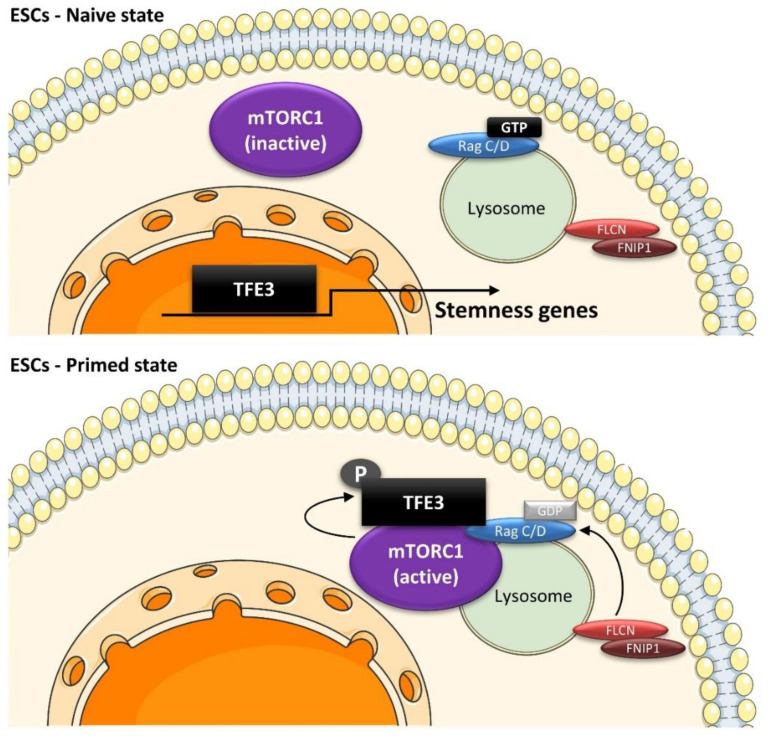Figure 7.
Role of the lysosomal machinery in ESC pluripotency. ESCs are maintained in a naïve state by nuclear TFE3, which induces expression of stemness-related genes, such as WNT in human ESCs or ESRBB in mouse ESCs. In response to differentiation signals, the FLCN–FNIP complex activates RagC/D, leading to TFE3 translocation to lysosomes and its phosphorylation by mTORC1. This causes cytoplasmic retention of TFE3 away from the nucleus and inhibition of its transcriptional activity, allowing ESCs to exit the naïve state of pluripotency.

